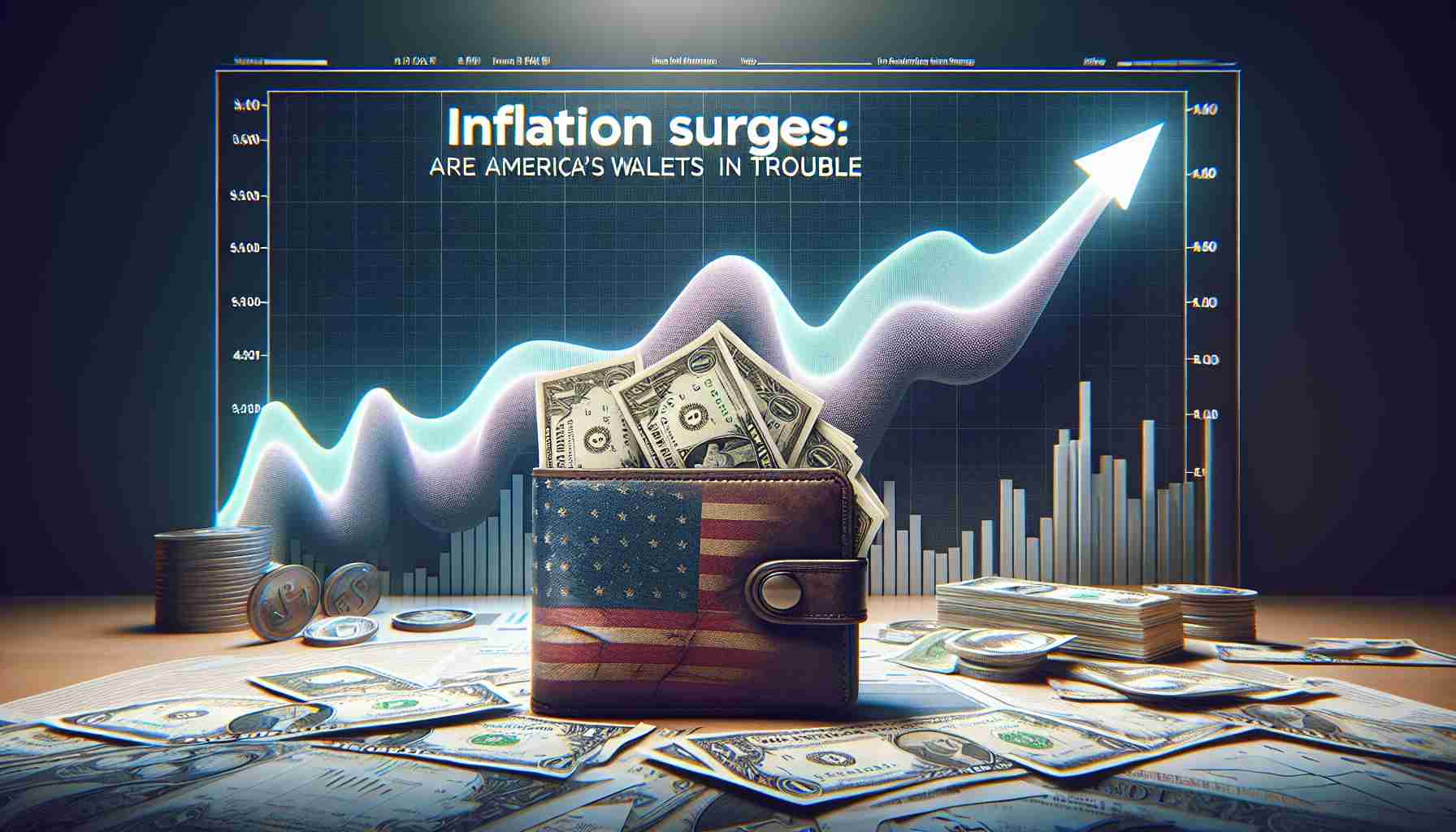- Prices in Los Angeles and across America are rising, with a 0.5% increase in the CPI for January, marking a significant inflation spike in eighteen months.
- The surge in inflation highlights higher costs for prescription medications, vehicle insurance, and food, notably a 15.2% rise in egg prices due to avian flu.
- Seasonal adjustments fail to alleviate price pressures, revealing deeper systemic inflation issues.
- Interest rates remain unchanged by the Federal Reserve amidst economic uncertainty and inflation threats, with Chair Jerome Powell signaling caution.
- Trade policies, including tariffs, continue to fuel inflation fears, affecting consumer confidence, stock markets, and the dollar’s path.
- Inflation poses a significant challenge to policy goals, delaying any potential relief and stability in prices.
Shoppers in Los Angeles navigate aisles, bracing for sticker shock as prices creep upward. Recent data paints a vivid picture of inflation gripping America with its hardest squeeze in eighteen months. The surge, marked by a 0.5% rise in January’s Consumer Price Index (CPI), unfolds against a backdrop of economic uncertainty under the watchful eyes of the Federal Reserve.
This inflationary spike, revealed by the Labor Department, exposes the true cost of doing business as the year begins. Prescription medication costs soar, vehicle insurance hikes intensify, and an avian flu outbreak sends egg prices rocketing by 15.2%—a jump reminiscent of mid-2015’s spikes. Fueled by these pressures, food costs swell, intensifying household concerns.
As economists sift through the numbers, they note a troubling pattern: Unfortunately, the seasonal adjustments meant to soothe these jolts miss their mark, barely masking the true breadth of the price pressures many hoped to dismiss as seasonal. This residual seasonality hints at deep-seated price issues, posing a real threat to policy ambitions and the promise of lower costs for Americans under President Donald Trump’s administration.
The Fed, with Chair Jerome Powell at the helm, signals caution. Interest rates remain steady, as recent economic moves seem to wash over hopes for imminent rate cuts. Eyes turn toward tariffs—some delayed, others enacted—that further stoke inflation fears. This complex financial dance not only rattles consumer confidence but also teases volatile stock markets and affects the dollar’s trajectory.
As America navigates this economic crossroad, the nation holds its breath, wondering if relief is anywhere on the horizon. The takeaway? Inflation remains a formidable force, and all signs suggest the journey toward price stability is far from over.
Inflation’s Grip: Surviving the Rising Cost of Living in America
Understanding Inflation and How It Affects Daily Living
Inflation is a persistent increase in the price level of goods and services in an economy over a period of time. When inflation is high, purchasing power decreases, making it essential for consumers to adapt their spending habits to maintain financial stability.
How-To: Manage Personal Finances During Inflation
1. Budget Adjustment: Re-evaluate your monthly budget to account for rising costs. Prioritize essential expenses and consider cutting back on non-essentials.
2. Emergency Fund: Strengthen or build an emergency fund. Aim for three to six months’ worth of living expenses saved up to cushion against future price hikes.
3. Shopping Strategies:
– Use coupons and loyalty programs for discounts.
– Opt for generic brands over name brands to save on groceries.
– Buy in bulk to reduce cost per unit.
4. Energy Efficiency: Reduce utility bills by investing in energy-efficient appliances and using energy-saving habits like unplugging devices when not in use.
5. Debt Management: Pay down high-interest debt as quickly as possible. Consider refinancing options for lower interest rates if available.
Real-World Use Cases: Impact of Inflation
1. Grocery Shopping: Americans are spending more on essential food items due to inflated prices, prompting a shift towards bulk buying and alternative brands.
2. Healthcare: Rising prescription costs are driving consumers toward generics and alternative therapies.
3. Housing Market: Increased building material costs push property values up, while rental prices soar, making housing less affordable.
Market Forecasts & Industry Trends
The Federal Reserve’s caution regarding inflation suggests that interest rate adjustments may be used as a tool to manage economic stability. However, indicators show continued inflationary pressures, making it likely that consumers will face a sustained period of elevated prices.
– Labor Market: Wage growth may lag behind inflation, squeezing consumer purchasing power even further.
– Energy Sector: Geopolitical tensions and supply chain issues could keep energy prices volatile, impacting transportation and manufacturing costs.
Controversies & Limitations
One controversial aspect of current inflation trends revolves around the effectiveness of monetary policies. Critics argue that the Federal Reserve’s reluctance to implement drastic measures could prolong financial strain on households.
Moreover, some economists debate the accuracy of seasonal adjustments, which may obscure the true inflation rate, leading to less effective policy responses.
Security & Sustainability
To ensure financial security and sustainability during high inflation:
– Invest Wisely: Consider investments in inflation-resistant sectors like technology and healthcare.
– Diversification: Maintain a diversified investment portfolio to spread risk.
Recommendations and Quick Tips
– Regularly review and adjust financial goals to align with economic conditions.
– Stay informed about Federal Reserve announcements and economic shifts.
– Continue learning financial literacy to make informed decisions during economic turbulence.
To explore further insights and resources, visit Federal Reserve and U.S. Bureau of Labor Statistics.
By actively managing your finances and staying informed, you can better navigate the challenges posed by inflation and secure a more stable economic future.
